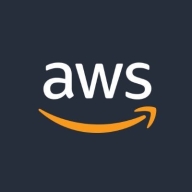

FortiCNAPP and AWS Security Hub compete in the cloud security software category. AWS Security Hub appears to have the upper hand due to its integration capabilities and affordability.
Features: FortiCNAPP offers robust anomaly detection, simplifying compliance reporting and integrating with alert channels. It helps prioritize alerts based on severity with comprehensive context. AWS Security Hub provides a unified dashboard that integrates seamlessly with AWS services and supports CIS standards, offering detailed insights into cloud configurations and streamlining security checks.
Room for Improvement: FortiCNAPP needs better visibility and data governance, especially in IAM security. Users desire simpler alert configuration and improved third-party tool integration. FedRAMP authorization is not available. AWS Security Hub struggles with open-source tool integration and cross-cloud deployments. Its dashboards require more customization, and real-time vulnerability detection needs enhancement. Its configuration and integration are seen as complex, hindering usability.
Ease of Deployment and Customer Service: FortiCNAPP is commended for responsive customer support through channels like Slack, though initial integration can be challenging. It supports public and private cloud environments. AWS Security Hub, focused on public cloud use, receives mixed support feedback, with brief initial assistance and variation in user satisfaction regarding support interactions.
Pricing and ROI: FortiCNAPP is perceived as slightly expensive but justifies its cost with reduced manual monitoring and effective detection. AWS Security Hub is generally affordable with a pay-as-you-go model, aligning cost with feature set and providing competitive security assessment tools. Users acknowledge its cost efficiency but desire more detailed ROI metrics.
| Product | Market Share (%) |
|---|---|
| AWS Security Hub | 3.9% |
| FortiCNAPP | 2.7% |
| Other | 93.4% |

| Company Size | Count |
|---|---|
| Small Business | 10 |
| Midsize Enterprise | 5 |
| Large Enterprise | 12 |
| Company Size | Count |
|---|---|
| Small Business | 4 |
| Midsize Enterprise | 4 |
| Large Enterprise | 4 |
AWS Security Hub is a comprehensive security service that provides a centralized view of security alerts and compliance status across an AWS environment. It collects data from various AWS services, partner solutions, and AWS Marketplace products to provide a holistic view of security posture. With Security Hub, users can quickly identify and prioritize security issues, automate compliance checks, and streamline remediation efforts.
The service offers a range of features including continuous monitoring, threat intelligence integration, and customizable dashboards. It also provides automated insights and recommendations to help users improve their security posture. Security Hub integrates with other AWS services like Amazon GuardDuty, AWS Config, and AWS Macie to provide a unified security experience. Additionally, it supports integration with third-party security tools through its API, allowing users to leverage their existing security investments.
With its user-friendly interface and powerful capabilities, AWS Security Hub is a valuable tool for organizations looking to enhance their security and compliance posture in the cloud.
FortiCNAPP is a comprehensive cloud security platform focusing on ease of use and machine learning-driven anomaly detection. It offers robust compliance reporting, seamless integration, and continuous monitoring, making it an essential tool for organizations managing multi-cloud environments and security configurations.
FortiCNAPP provides significant capabilities in cloud security, compliance, and vulnerability management. Designed for organizations needing efficient monitoring, it enables detection of anomalies across cloud infrastructures while optimizing security posture and ensuring compliance with environments like AWS and GCP. The platform offers in-depth insights through scanning of IAC scripts, host systems, and cloud configurations. Recognized for effectively managing security posture, it safeguards Kubernetes and container environments, providing comprehensive threat detection and response. However, some areas like visibility, IAM security controls, and compliance metrics need improvement. Users face challenges with alert setup and lack intuitive design, alongside issues like FedRAMP authorization absence and complexity in the data model.
What are the key features of FortiCNAPP?FortiCNAPP is implemented extensively by industries needing reliable cloud security, such as finance, healthcare, and technology sectors. It supports organizations in enhancing cloud infrastructure protection, ensuring compliance, and strengthening vulnerability management. By integrating with platforms like AWS and GCP, businesses can optimize security posture in their cloud deployments.
We monitor all Cloud Security Posture Management (CSPM) reviews to prevent fraudulent reviews and keep review quality high. We do not post reviews by company employees or direct competitors. We validate each review for authenticity via cross-reference with LinkedIn, and personal follow-up with the reviewer when necessary.